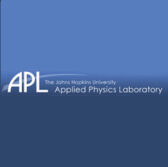 NASA has selected a Johns Hopkins University Applied Physics Laboratory proposal as one of two finalists for the space agency’s New Frontiers program which aims to further solar system exploration efforts.
NASA has selected a Johns Hopkins University Applied Physics Laboratory proposal as one of two finalists for the space agency’s New Frontiers program which aims to further solar system exploration efforts.
Johns Hopkins said Thursday the proposed Dragonfly dual-quadcopter vehicle will look to evaluate the prebiotic organic chemistry as well as the habitability of Saturn’s largest moon called Titan.
Dragonfly will be equipped with four science instruments including a Multi-Mission Radioisotope Thermoelectric Generator to evaluate the moon’s atmospheric and surface conditions, collect images of the environment’s landforms, investigate geological processes as well as conduct seismic studies.
APL will also build, design and operate spacecraft for the Enceladus Life Signatures and Habitability as well as the Venus In situ Composition Investigations concepts in preparation for future NASA competitions.
NASA will fund Dragonfly as well as the Goddard Space Flight Center and Cornell University co-led Comet Astrobiology Exploration Sample Return mission until the end of 2018 to help advance and mature each concept.
The space agency will select one of the two investigations for continuation to subsequent mission phases in the spring of 2019.




